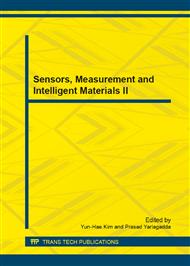p.1468
p.1474
p.1479
p.1483
p.1487
p.1494
p.1499
p.1503
p.1507
Effects of Custom-Made and Thread Dental Implant Systems on the Stress Distribution in Alveolar Bone: A 3-Dimensional Finite Element Analysis
Abstract:
Aiming to investigate the effects of custom-made and thread dental implant systems on the stress distribution in alveolar bone using linear analysis of the finite element method (FEM). Two types of systems: the custom-made implant and the thread dental implant system, were studied using a three-dimensional finite element analysis (3D FEA). Comparing the parts of all systems for loading in different directions, the stress and deformation distribution in custom-made implant and alveolar bone are better than that in thread dental implant system. The analysis data definitely demonstrated the difference in stress and deformation distribution of components in different dental implant systems. Results show the custom-made implants are provided with more advantages and can be used in future experiment and clinical test.
Info:
Periodical:
Pages:
1487-1493
Citation:
Online since:
December 2013
Authors:
Price:
Сopyright:
© 2014 Trans Tech Publications Ltd. All Rights Reserved
Share:
Citation:


